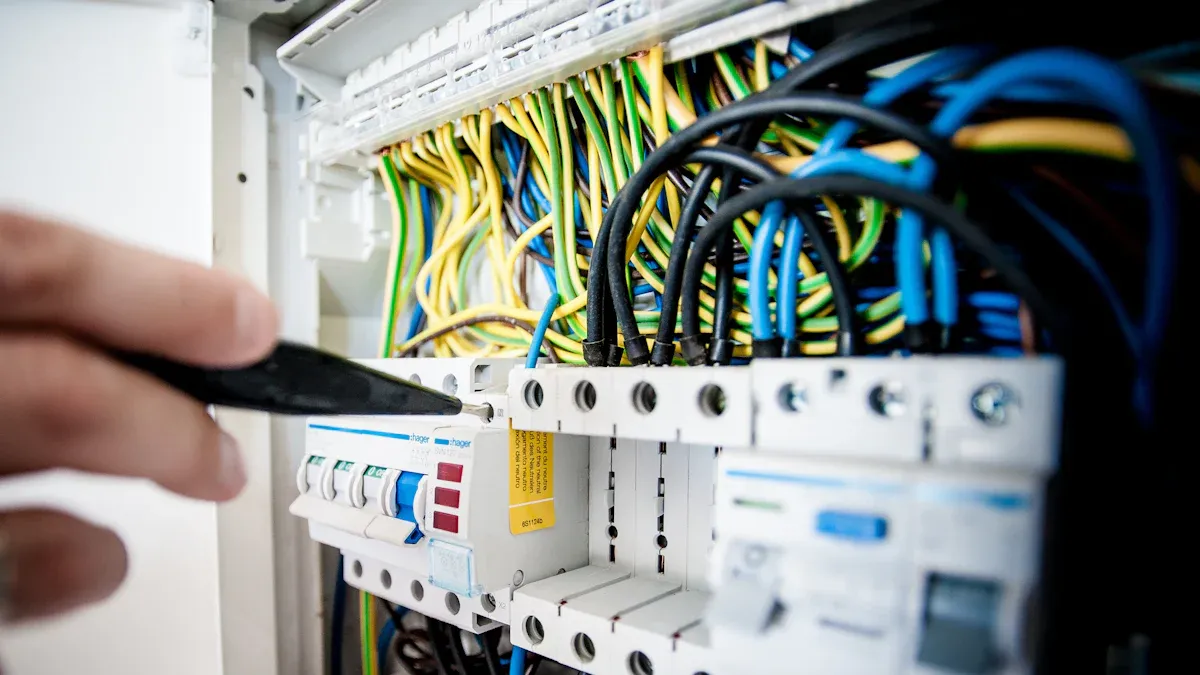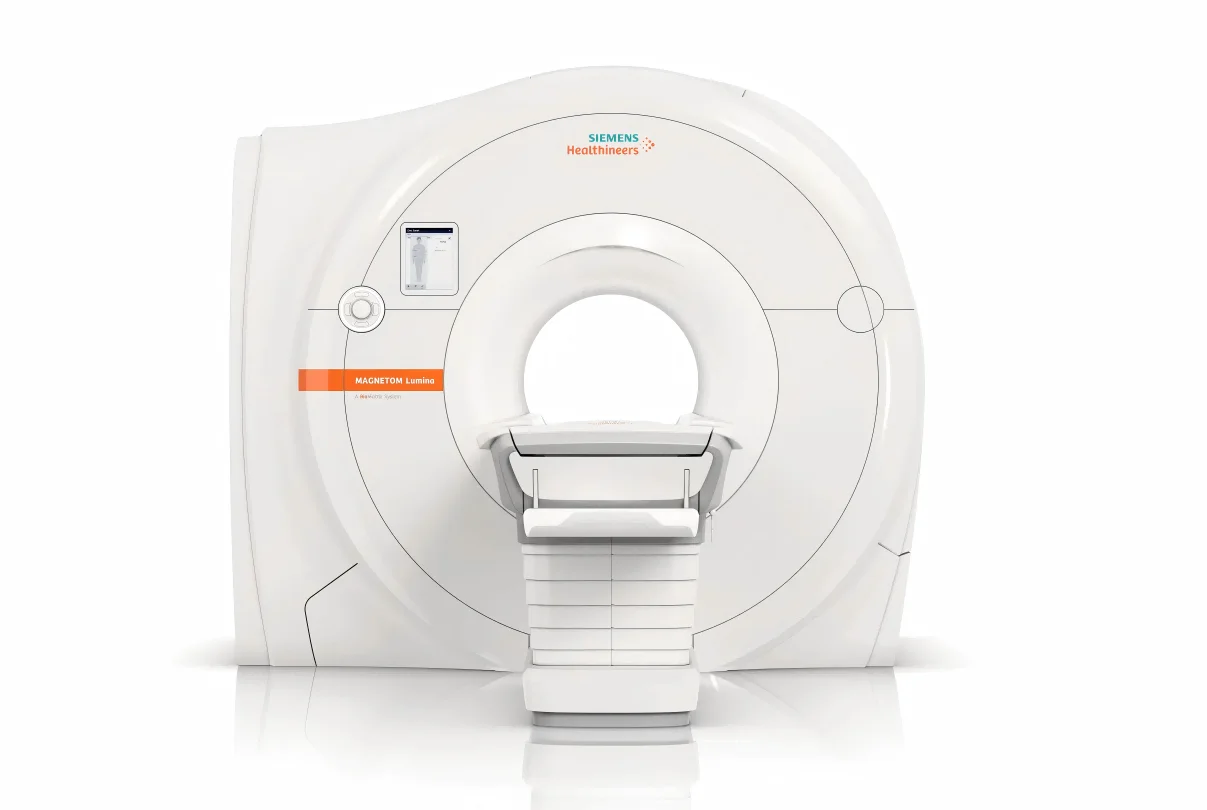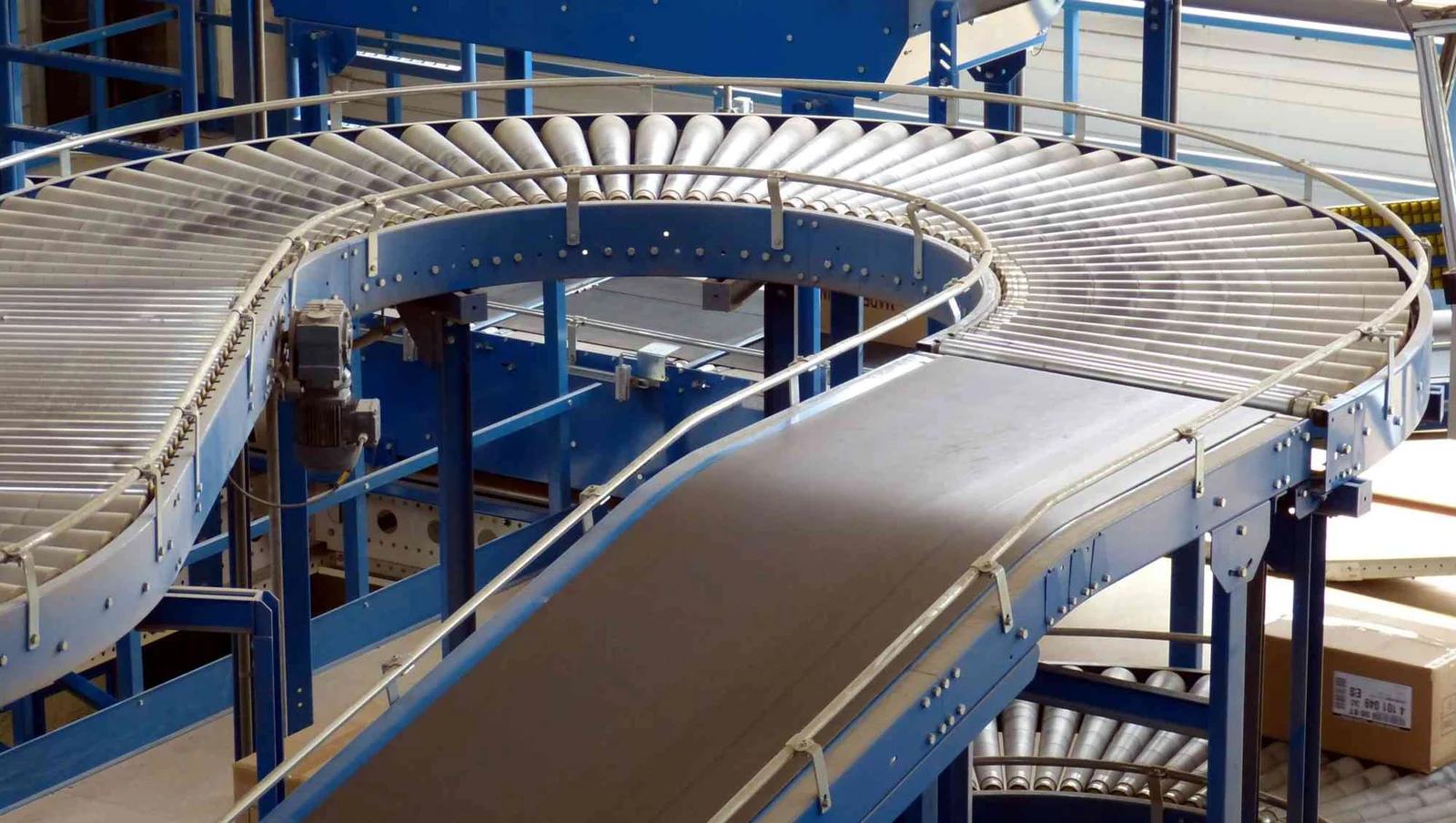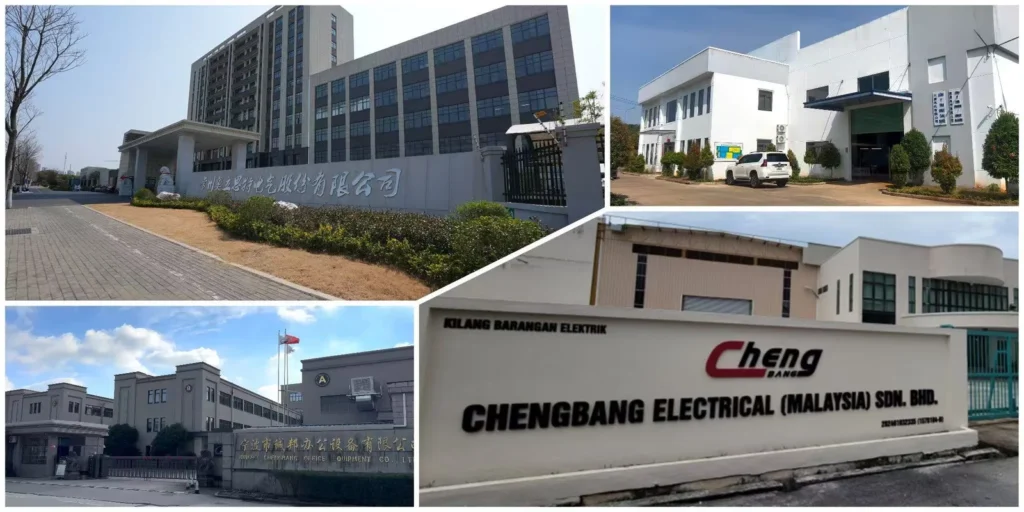
Low power factor can hurt your profits. It causes more current to flow, which puts stress on your electrical parts. This stress means you need bigger wires and stronger equipment, raising your starting costs. Also, the damage to transformers, generators, and wires can make equipment last less time. Because of this, you will have higher running costs and less ability to use power effectively. This article compares the fixed method of capacitor banks with the helpful features of Synchronous Motors.
Key Takeaways
A low power factor costs more and shortens equipment life. Fixing it can save money and make things work better.
Synchronous motors correct power factor changes quickly. They adjust to load changes better than capacitor banks.
Capacitor banks cost less at first, but their upkeep can be more expensive over time than synchronous motors.
Synchronous motors improve energy use and stability. This leads to lower utility bills and better performance.
Making synchronous motors fit specific needs can boost performance and lower total ownership costs.
The True Cost of Low Power Factor: The Silent System Drain
Utility Penalties & Lost kVA
A low power factor can cause big utility fees. If your system runs below a power factor of 0.9, you might lose 20-30% of electricity. This means you waste a lot of your kVA capacity. Because of this, you end up paying more for the same usable power. Utility companies often charge extra for low power factor, which raises your costs.
Heat Stress and Voltage Degradation
Low power factor also makes your electrical systems heat up. More current flow causes higher losses in transformers and cables. This heat can overload transformers and waste energy. Too much heat speeds up the wear of insulation and parts, making them last less time.
Low power factor leads to:
More current flow, causing higher losses.
Overloaded transformers, which waste energy.
Faster aging of insulation and parts.
Also, voltage drops happen in systems with low power factor. Poor power quality costs about $119 billion each year for U.S. factories. In Europe, 25 countries lose around $160 billion yearly because of similar problems. Voltage issues often come from changing loads and differences in industrial machines.
You can see clear effects on equipment life when voltage drops. For example:
Lowering usable voltage from 400V to 380V can cut system losses by 0.487%.
Improving the power factor from 0.85 to 1 can reduce energy losses by 1.388%.
These cuts help equipment last longer.
By fixing low power factor, you can lower these costs and make your electrical systems work better.
The Traditional P.F.C. Method: Capacitor Bank Limitations

Capacitor banks have been used for a long time to fix power factor problems. But they have some big limits that can affect how you run your business and your costs.
The High Cost of Static Correction
Capacitor banks cost less at first than dynamic solutions like synchronous motors. But their long-term costs can be much higher because of maintenance and replacements. You might see that the initial cost looks good, but the savings over time may not be worth it.
Method | Upfront Cost | Lifetime Expenses | Energy Savings | ROI Timeframe |
|---|---|---|---|---|
Capacitors | Lower | Higher due to maintenance and replacements | Lower | Slower |
SVGs | Higher | Lower due to efficiency and lifespan | Faster in high-demand environments |
Why Stepped Control Fails High-Fluctuation Loads
Capacitor banks often use stepped control to fix power factor issues. This way can have trouble with loads that change a lot. When your load changes a lot, capacitor banks may not react fast enough. This delay can cause too much or too little correction, making your power factor problems worse.
Over/Under-Correction Risk
Too much correction can raise the power factor, but it can also cause voltage spikes that hurt equipment. On the other hand, too little correction keeps your power factor low, which can lead to extra fees from utility companies. This balancing act can be expensive, as you might need to adjust your capacitor banks often to keep a good power factor.
Hidden Risks: Harmonic Resonance and Power Quality Degradation
Capacitor banks can bring hidden risks that hurt your power quality. Harmonic resonance is one of the biggest problems. When capacitor banks resonate with system inductance, they can boost harmonics, causing overvoltages and overcurrents.
Cause of Harmonic Resonance | Description |
|---|---|
Resonance with system inductance | Capacitor banks can resonate with system inductance at certain harmonic frequencies, boosting harmonics and causing overvoltages and overcurrents. |
Low impedance path creation | When placed in a harmonic-rich area, capacitor banks create a low impedance path, increasing current and voltage harmonics, leading to a parallel resonant effect. |
High impedance at resonant frequency | High impedance at the parallel resonant frequency can cause high voltage harmonic levels, especially if it matches lower order harmonics like the 5th or 7th. |
Power quality problems show up in different ways. Voltage drops can damage equipment and cause annoying shutdowns. Harmonics can cause overheating and failure in capacitor banks. Sudden overvoltages can lead to inefficiencies and equipment breakdowns.
Disturbance Type | Consequences |
|---|---|
Voltage Sags | Equipment damage, annoying shutdowns |
Harmonics | Overheating and failure in capacitor banks |
Transient Overvoltages | Inefficiencies, equipment breakdowns |
Synchronous Motors: From Driver to Dynamic Grid Asset

Synchronous motors are very important for fixing power factor problems. They do this through something called excitation. This helps you control the power factor of your system well. Here’s how it works:
How Excitation Delivers Continuous P.F. Correction
Synchronous motors can work at different power factors: lagging, leading, or unity.
By changing the excitation, you can manage the power factor, which is key for fixing power factor issues.
When you overexcite synchronous motors, they help improve the overall power factor of a system, especially if it has a lagging power factor.
This ability lets you change the motor‘s performance based on what you need, making sure your system runs well.
Dual Benefits
Synchronous motors provide big benefits that help with system efficiency and stability.
Inherent IE4/IE5 Efficiency
Synchronous motors are very efficient for motors over 1000 kW. They can boost the power factor of a plant, cutting down the need for capacitor banks. Their efficiency ratings are often better than those of induction motors, especially when fully loaded. This means you can expect:
More energy savings because of fewer losses.
Less need for extra power factor correction tools, like capacitor banks.
Voltage Stability Support
Synchronous motors work at a leading power factor. This helps fix the lagging power factor caused by induction motors. By doing this, you lower the reactive power taken from the supply system. This leads to:
Lower utility reactive power fees.
Better voltage stability across your electrical system.
With synchronous motors, you can keep a high power factor, which means better performance and lower costs.
Robust Design for Harsh Industrial Environments
Synchronous motors are made to handle tough conditions found in industrial places. Their strong design includes:
High-temperature resistance: They can work well in very hot or cold places, making them good for refineries and other tough environments.
Durability: These motors are built for great performance throughout their life, ensuring reliability in important applications.
Enhanced efficiency: The motors are part of a program to boost efficiency, performance, and reliability in challenging industrial tasks.
By choosing synchronous motors, you invest in a solution that not only meets your power factor correction needs but also improves the overall efficiency and reliability of your operations.
TCO, Performance, and the Custom Advantage
TCO Breakdown: The Long-Term Economic Superiority
When you look at synchronous motors and capacitor banks for fixing power factor, the total cost of ownership (TCO) shows a clear benefit. Synchronous motors might cost more at first, but they save you money in the long run. They use less energy, which means lower utility bills. Over time, you will see that the savings from operations are more than the initial costs.
Aspect | Synchronous Motors | Capacitor Banks |
|---|---|---|
Initial Cost | Higher | Lower |
Maintenance Costs | Lower because they last longer | Higher because they need replacing often |
Energy Savings | Limited savings | |
Long-Term ROI | Faster because of efficiency | Slower due to maintenance needs |
Precision and Response: A Performance Metric
Synchronous motors are great at handling quick changes in load. They stay stable even when voltage drops a lot, making them reliable in busy industrial settings. On the other hand, capacitor banks have trouble with these changes, which can cause inefficiencies. Here’s how they compare:
Feature | 同期モーター | Capacitor Bank |
|---|---|---|
Increases when voltage goes down | Decreases when grid voltage goes down | |
Tolerance to Power Fluctuations | More tolerant of changes | Less tolerant |
Voltage Support | Offers some support during drops | Not made for voltage support |
Switching Transients | Does not create switching transients | Can create switching transients |
Inertia | Has rotating inertia for stability | No inertia |
Customization is Key: Tailoring the Strategic Asset
Customization is very important for getting the most out of synchronous motors. You can adjust these motors to fit specific load needs and grid conditions. This flexibility improves their performance and efficiency. Here are some customization options:
Feature | Details |
|---|---|
Ratings | |
Rotor | Round 2-Pole or Solid Salient Pole |
Poles | 2, 4, or 6 |
Excitation | Static or Brushless |
Starting | Full Voltage, Reduced Voltage, Reactor start, Pony Motor |
Cooling | TEWAC, TEAAC, WP, TEPV |
By picking customized synchronous motors, you ensure they are reliable and efficient. This tailored method lowers your total cost of ownership and helps the environment. With a global service network and expert knowledge, you get support for your motor throughout its entire life.
Regular solutions often do not give you the best return on investment (ROI). You need a motor system that matches your specific load and grid needs. Our special engineering team works with you to create custom motor solutions. This teamwork makes sure the final product fits your unique needs.
Important parts of making a custom power factor correction solution include knowing your load profile and using advanced monitoring tools. This method leads to new ideas that improve performance.
We encourage you to reach out to the Honest Engineering Team for a total cost of ownership (TCO) assessment and to design a custom solution that fits your needs. Together, we can make your operations better and help your profits grow.
FAQ
What is the main advantage of using synchronous motors for power factor correction?
Synchronous motors help fix power factor problems. They change their excitation to keep power factor levels just right. This makes energy use better and lowers utility bills.
How do capacitor banks compare to synchronous motors in terms of maintenance?
Capacitor banks need more maintenance and replacements because they wear out faster. On the other hand, synchronous motors usually need less maintenance, which saves you money over time.
Can synchronous motors operate in harsh environments?
Yes, synchronous motors are built for tough industrial settings. They can handle extreme heat, dust, and moisture, making them dependable for many uses.
How does excitation affect the performance of synchronous motors?
Excitation controls how well synchronous motors work. By changing the excitation levels, you can make sure they run efficiently, even when loads change.
What should I consider when choosing between synchronous motors and capacitor banks?
Think about your power factor needs, maintenance costs, and where you will use them. Synchronous motors give you dynamic correction and strength, while capacitor banks offer a simple solution with lower upfront costs.






